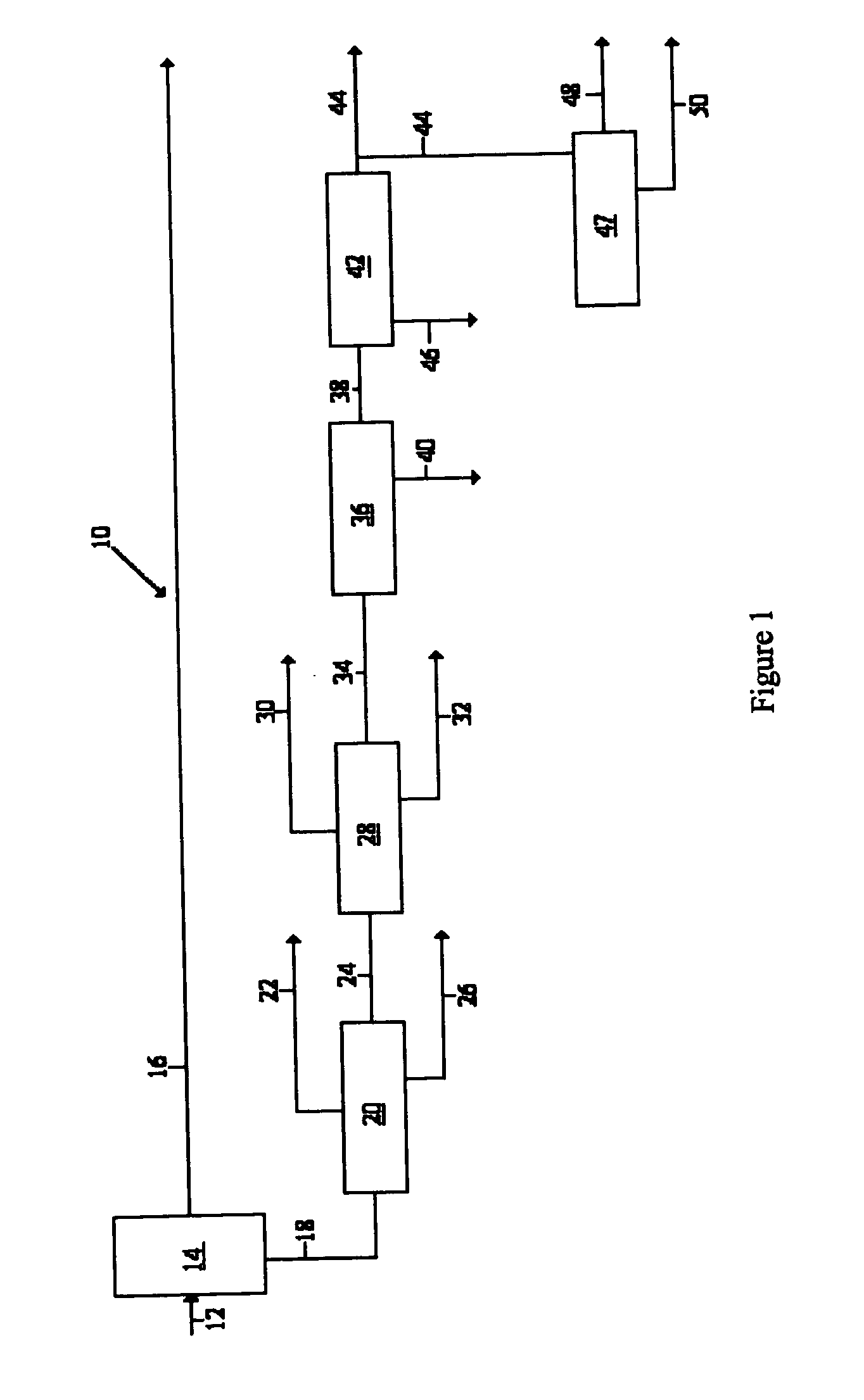Method of purifying fischer-tropsch derived water
- Summary
- Abstract
- Description
- Claims
- Application Information
AI Technical Summary
Benefits of technology
Problems solved by technology
Method used
Image
Examples
Embodiment Construction
[0102] The Fischer-Tropsch reaction water 12 is fed to a distillation column 14 for primary treatment.
[0103] Two streams 16 and 18 exit distillation column 14. Stream 16 contains predominantly organic constituents whilst stream 18 is a primary water enriched stream.
[0104] At least a fraction of the organic acids in stream 18 are thereafter removed by liquid-liquid separation 20.
[0105] Liquid-liquid separation 20 yields an organic acid enriched extract stream 22, a secondary water enriched or raffinate stream 24 and a mixed hydrocarbon stream.
[0106] The secondary water enriched stream is subjected to biological treatment28 which yields gases 30, sludge 32 and a tertiary water enriched stream 34. Biological treatment can take the form of anaerobic treatment or aerobic treatment or a combination of the two.
[0107] The tertiary water enriched stream 34 from biological treatment 28 is typically subjected to a softening step 36 which yields a softened tertiary water enriched stream 38...
PUM
| Property | Measurement | Unit |
|---|---|---|
| Density | aaaaa | aaaaa |
| Density | aaaaa | aaaaa |
| Density | aaaaa | aaaaa |
Abstract
Description
Claims
Application Information
 Login to View More
Login to View More - R&D
- Intellectual Property
- Life Sciences
- Materials
- Tech Scout
- Unparalleled Data Quality
- Higher Quality Content
- 60% Fewer Hallucinations
Browse by: Latest US Patents, China's latest patents, Technical Efficacy Thesaurus, Application Domain, Technology Topic, Popular Technical Reports.
© 2025 PatSnap. All rights reserved.Legal|Privacy policy|Modern Slavery Act Transparency Statement|Sitemap|About US| Contact US: help@patsnap.com

